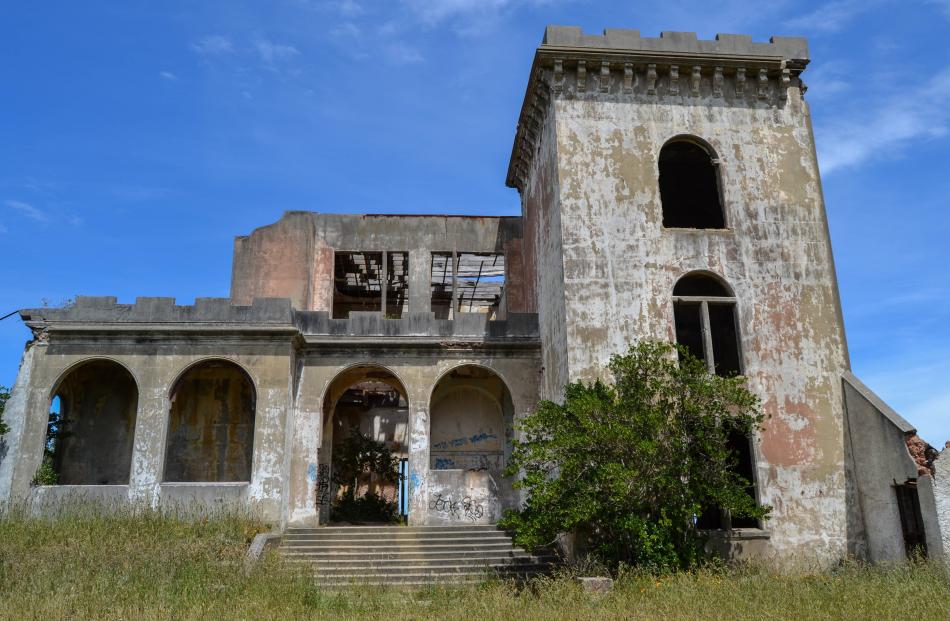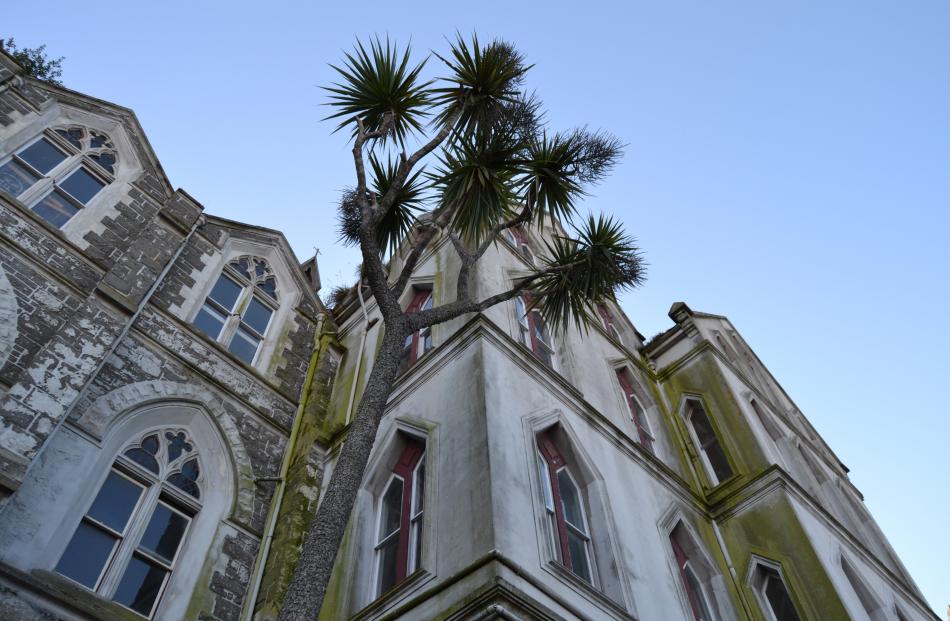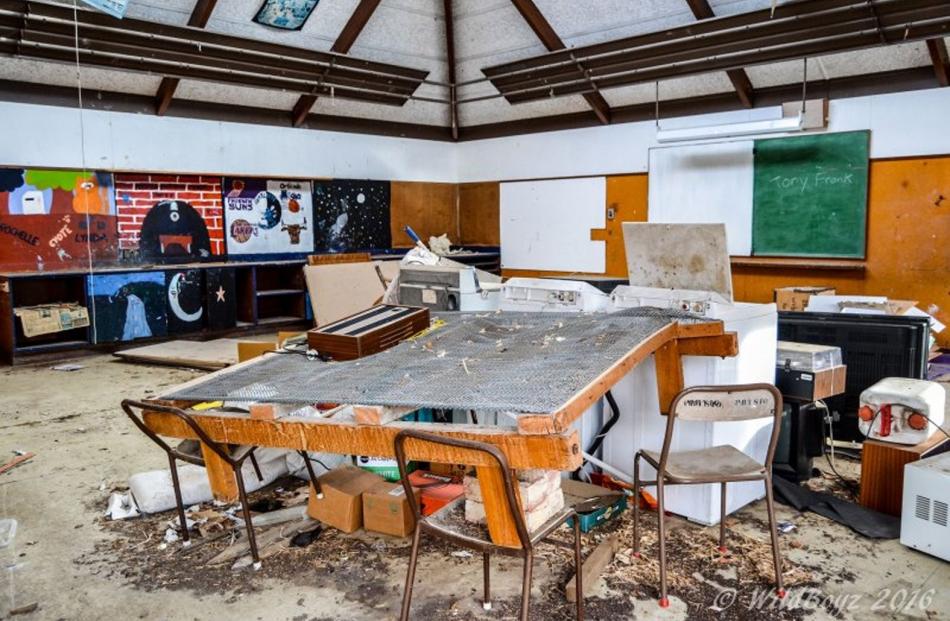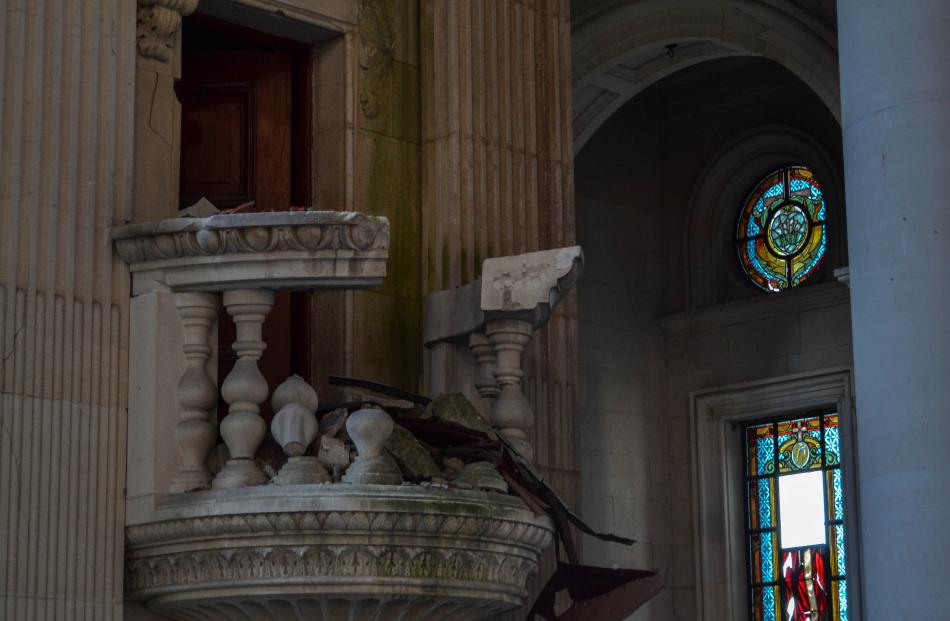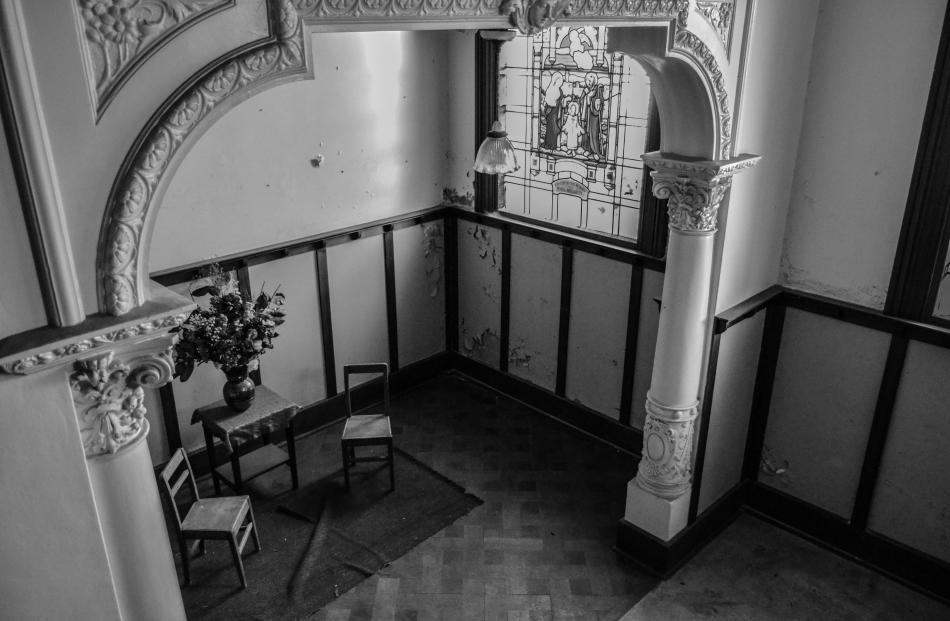Urban explorers are modern-day space invaders who view the city as their playground. Kim Dungey looks at a secretive and controversial pastime.
This is Dunedin as few have seen it: a Victorian drainage system, an eerily empty monastery, the inside of a crumbling concrete castle.
Taken by a member of UK group WildBoyz, the images shed light on the international community of urban explorers, which includes enthusiasts in Christchurch, Wellington and Auckland.
Also known as urbex and place hacking, urban exploring is about investigating and documenting off-limits or seldom-seen structures such as abandoned hospitals, factories, power stations, mine shafts and military installations.
It's a hobby that is as underground as the places it seeks to uncover, explorers entering properties without permission and adopting pseudonyms to protect their identities.
"A lot of time goes into trawling the internet, gathering research and finding odd bits of information which we then piece together," says the person who took the photos on these pages.
"Often we read newspapers. And rumours help a lot too. When we hear about a rumoured abandoned tunnel in an area for example, we'll follow it up and see if it really exists."
History shows the first urban explorer may have been Philibert Aspairt, a hospital door-keeper who became lost in the catacombs beneath Paris in 1793 and whose skeleton was discovered 11 years later.
However, the pastime came of age more recently when the internet and cheap portable cameras enabled enthusiasts to discuss missions and share photos online.
Popular locations range from the decaying industrial cities of the United States to Pripyat, the ghost city near Chernobyl. In London, cultural geographer Bradley Garrett has documented a group of explorers who have infiltrated sites above and below the city: uncompleted skyscrapers, half-built Olympic stadiums and a mothballed 10.5km subterranean train network used to move mail across the city.
Like Garrett, the photographer responsible for these images is an academic who made urban exploration his hobby and the focus of his PhD. Softly-spoken and affable, the man dubbed The Don (because he is the most organised of the dozen or so WildBoyz) began exploring as a teen and continued when he moved to Dunedin. Knowing New Zealand was a relatively young country, he expected to find mostly modern buildings but soon discovered locations that appeared to be deserted.
"You have to be careful in Dunedin," he says, smiling.
"Some of the student houses look abandoned but they're not."
In fact, his first exploration in the city uncovered something he hadn't expected. St Dominic's Priory was bigger than it appeared from the outside and after more than an hour searching the labyrinth of corridors, staircases and rooms - avoiding one where light could be seen through the crack at the bottom of the door - he bumped into the police: "It wasn't a great start to my New Zealand experience".
The Don said he was taking photos for research purposes; the police revealed they sometimes used the property for training and the room with a light on was occupied by a caretaker.
"The rest was pretty much stripped. There were a few pews, mirrors and bathtubs but not an awful lot else."
A seized Korean fishing vessel berthed in the upper Otago Harbour had been fumigated for rats and lice but still contained computers, food and clothing.
At Kenmure Intermediate, blackboards and artwork remained on the walls and a vacuum cleaner was plugged into a socket in a corridor despite the school being closed for 20 years.
Cargill's Castle, the ruins of an Italianate-styled mansion on the cliffs above St Clair, offered amazing views out to sea. However, the concrete construction gave it a "Disneyland feel" and much of the roof and flooring had rotted away.
The overflow channel at the Ross Creek Reservoir was covered in a treacherous layer of slime, Dunedin's Victorian stormwater system held large spiders and weta, and coastal defence fortifications at Harington Point, for some unknown reason, contained exercise machines: "Most were broken, but I specifically remember there being an exercise bike that one of the others tried out. It seemed to work just fine."
The Don has also explored abandoned psychiatric hospitals in both New Zealand and the UK, saying the "grim" buildings often contain patient files: "It's a farce. When they operate these places, they say it's all confidential. Then as soon as they abandon them, it's like, 'It's not our problem any more'. We've come across that so many times, even in residential care homes for the elderly."
Some sites sought out by explorers are abandoned following deinstitutionalisation or the collapse of manufacturing. Others are haunting reminders of natural disasters.
• Three years after the Canterbury earthquake, The Don and a member of Wellington-based Urbex Central sneaked into Christchurch's Catholic basilica where they photographed seats buckled by fallen masonry, hymn books caked in dust and rows of chairs facing rubble: "The whole back end just doesn't exist ... so you open a door and there's no room there. It's sort of apocalyptic."
Another building in their sights was the Christchurch Cathedral, which has been off limits since 2011 and now faces an uncertain future. For two hours, the pair waited for a gap in the passing stream of tourists so they could slip on to the site unnoticed. When they finally did, they discovered the back door was open and there was just enough light to take photos.
Inside, they found water damage, plant growth and pigeon droppings covering the floor. The roof had a gaping hole and the basement was flooded. However, the building was not in as bad a state as it first appeared and in some parts, there was no evidence of the quake at all: "All the really old leatherbound books were still there and paperwork and files. Even the red wine was still in a room upstairs."
While the pair also anonymously released photos of AMI Stadium, the former teachers' college building and red-zoned Port Hills homes, it was the cathedral images that elicited the most response. Many people seemed glad someone had got in so they could see what it looked like but the Anglican diocese labelled it an act of orchestrated lunacy that risked the explorers' lives and could have endangered rescuers. Others said naming locations on websites was an invitation to thieves and vandals.
The Don has no regrets, saying his main aim is to preserve the history of sites in reports and photos before they are lost to alterations or demolition.
Cheaply constructed contemporary buildings are less interesting to explore, making it unlikely that urban exploration will exist in its present form in the future. And New Zealand's empty premises seem to be demolished more quickly than those elsewhere, possibly because they are mostly of timber construction.
"We live in a very fluid society these days ... Nothing's permanent, everything changes rapidly and there's no sense like there perhaps was in the past that you have to preserve things and fix them ... We're building new things before we've even let the old ones fall down.
"I like the sense of adventure we get from that in terms of explorers but I do find there's a very sad element to it all. You don't always come out of these places feeling particularly happy."
The Don talks of finding places of beauty and solitude among bustling streets or tightly packed buildings and of opening people's minds to history through photos that make the dull and dirty look vibrant. But others see urban exploration as a political act: a way for people to reclaim over-regulated, over-securitised cities and to have experiences that are increasingly hard to come by.
While explorers have been arrested, The Don says the WildBoyz do not break into buildings - instead looking for existing openings - and do not trespass, which would apply only if an occupier warned them to leave and they refused to go or returned later.
The men equip themselves with cameras, tripods, spare memory cards, remote controls, torches, dust masks and gas detectors but do not take tools because doing so could see them charged with burglary.
They also claim to withhold entry information from anyone they don't trust and to always leave things as they find them. However, they accept that sites posted online will "probably fall apart quicker" than they would if left undiscovered.
Something all sides agree on is that the hobby can be dangerous.
On its website, Urbex Central lists potential hazards. Asbestos. Toxic moulds. Falls through rotten stairs, rooftops and floors. Puncture wounds from rusty nails. Dangerous gases in drains and tunnels. Drowning underground during flooding. Electrocution from live wires. Pigeon faeces, which can cause an illness known as pigeon-breeder's lung. And the hardest to avoid: running into other people who may not be there with innocent intentions and who may be violent when startled.
• In recent years there have been more fatalities as younger enthusiasts compete for attention and credibility online through riskier activities, such as base jumping and standing on the edges of roof tops.
Experienced explorers take risks only if it seems safe enough to do so, The Don says, adding that he has never hung off a tall building but has abseiled into the bell mouth of a dam and sailed a rubber dinghy through jellyfish-infested waters to an abandoned castle.
As school friends, he and the other WildBoyz (named for the Duran Duran song, which they heard on the radio while travelling) also enjoyed rock climbing and swinging off ropes attached to high bridges.
More recently, they have explored a limestone mine with underground tunnels covering 42km and three separate levels, and inspected "massive" Victorian storm drains, sometimes using Google maps to find where a river suddenly disappears, and once stumbling into a sewer.
They also found a deserted train station hidden by trees in the heart of London and, until the police arrived, spent days sledging at an abandoned artificial ski slope.
"They said it looked fun and that if we hadn't been there, they'd have got their riot shields out and had a go themselves. But obviously they had to tell us to leave with it being private property."
Each time they head out, they hope to uncover something more than the coffee cups, toilet paper and office Christmas decorations usually discarded when buildings are vacated.
In an abandoned silversmith's workshop, they came across old tools, chemicals and big boxes of antlers used in the cutlery trade.
In a deserted steel factory, they stumbled upon an air raid shelter and medical room - complete with out-of-date medicines and wooden crutches - that looked like they hadn't been touched since the 1940s.
"Quite often it feels like people have just upped sticks and left. It's fascinating the stuff they leave behind."
The group (the members of which include Ford Mayhem, Rizla Rider, MKD, Husky, Box and The Hurricane), have also scaled high buildings, one a 101m-tall apartment block that they had their eyes on for "ages".
One night - trying to look as innocent as possible - they walked into the 32-storey building and past the security guard to the elevators, The Don says.
After taking a lift halfway up, then climbing the rest of the way to avoid suspicion, ignoring a "Do not enter" sign, scaling a second staircase, climbing a ladder and popping a hatch, they were rewarded with a view of the city glistening below and the countryside beyond. Mesmerised, they stayed until sunset.
Often, though, they will gather at a pub or at one of their homes to relive their exploits: "We tend to have a drink afterwards. It's sort of a celebration that you pulled another one off."
While urban exploring is about adventure, preserving historical information and spending time with people whose company he enjoys, there is "definitely" a thrill in accessing places they are not supposed to be in.
"Quite often we've done stuff where we know there's probably not going to be a lot in it but because it's a difficult entry you make the effort ... It's always the most interesting bit."
"Sometimes you have to be really inventive to get in these places without breaking in. It might involve going through the roof or an unknown tunnel you've managed to find. It might involve worming your way through very small, tight gaps that you wouldn't think it was humanly possible to get through.
"Then there's the constant looking out for other people ... Most are probably not that bothered but there will always be one who will phone the police."
• See more photos at www.wildboyz-ue.com
Comments
Philibert Aspaire, the first undergrounder, entered popular culture. It seems there is a game called 'Assassin', in which Philibert stashes Chartreuse in the catacombs, and is whacked by an angry nun, on the grounds Chartreuse is too good for a peasant such as he.

